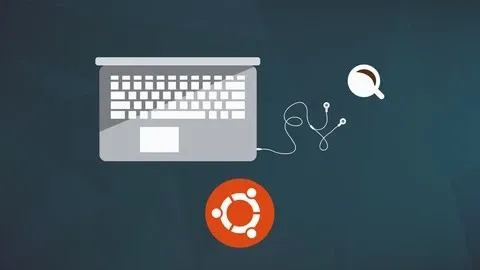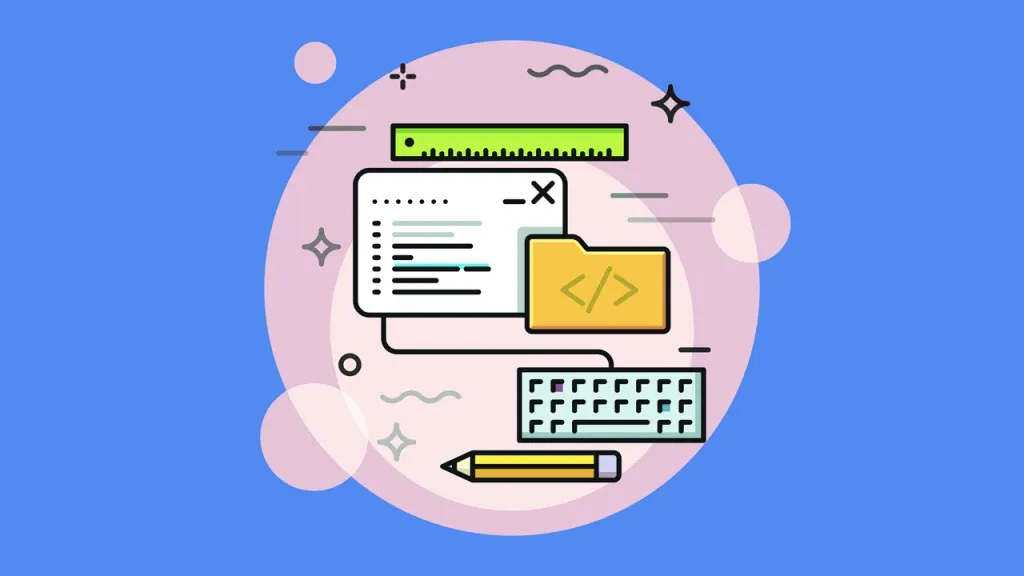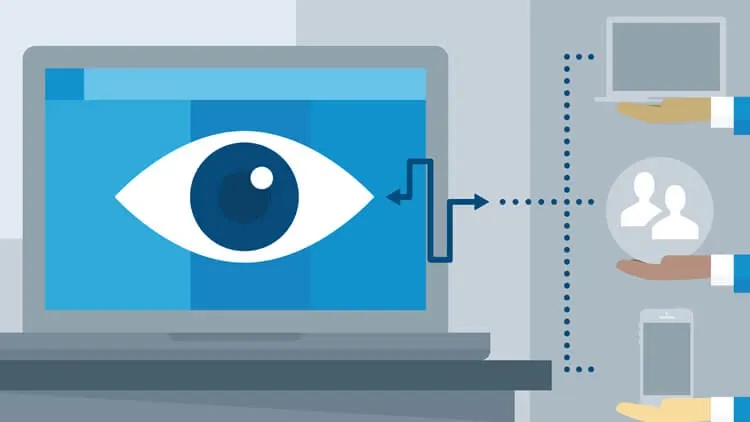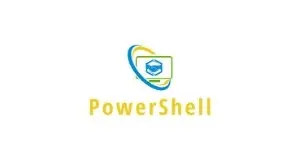This plan includes
- Limited free courses access
- Play & Pause Course Videos
- Video Recorded Lectures
- Learn on Mobile/PC/Tablet
- Quizzes and Real Projects
- Lifetime Course Certificate
- Email & Chat Support
What you'll learn?
- Setup a Linux environment.
- Linux command line usage.
- Setup a server and deploy a web app.
- User management on a Linux system.
- Linux administration tasks.
Course Overview
Would you like to get a job in the field of IT? Do you want to become a Linux system administrator but don’t know where to get started? In this course we will begin by covering the very basics of using the Linux operating system, and move on to the advanced system and networking skills necessary to become a Linux administrator! We will cover the following topics in this course:
-
Linux installation
-
Command line usage
-
Development tools including choosing an IDE
-
GitHub setup
-
Complete Meteor.js web project
-
LAMP stack setup and app deployment
-
User management
-
Network administration
Enroll now to receive 7.5+ hours of HD video tutorials, lifetime access and a certificate of completion!
This course is fully subtitled in English.
If you are not convinced, here are a few of the glowing reviews this course has received.
"Course starts out with basic commands and works through more advanced commands as it progresses. The course then goes through add on software and applications following demonstrates basic usages of that application. It was easy to follow along on my personal install of Ubuntu by pausing/review the tutorial as needed. I suggest this method than just sitting and watching the course all the way through. This course is much easier than just reading books. Recommend to friends who just started out in Ubuntu."
"Great explanations. Great teacher."
"It's still early in the course but I've learned a lot. Great job so far."
Thank you for taking the time to read this and we hope to see you in the course!
Pre-requisites
- Access to a computer.
- Internet access to download the necessary software (free).
Target Audience
- Students who would like to start using Linux.
- Students interested in a career as a Linux system/network administrator.
Curriculum 86 Lectures 07:22:07
Section 1 : Introduction to Linux
- Lecture 2 :
- Linux distributions explained
Section 2 : Ubuntu Linux Installation
- Lecture 1 :
- VirtualBox installation and virtual machine setup
- Lecture 2 :
- Ubuntu Linux installation in a virtual machine
- Lecture 3 :
- Ubuntu Linux installation continued
- Lecture 4 :
- First boot up into Linux
- Lecture 5 :
- VirtualBox Guest Additions
- Lecture 6 :
- Ubuntu desktop customization
- Lecture 7 :
- Unity Tweak Tool
- Lecture 8 :
- Installing Linux alongside Windows (dual boot)
- Lecture 9 :
- Dual boot setup continued
Section 3 : Linux Command Line Interface (CLI) Essentials
- Lecture 1 :
- Getting started with the Linux command line interface (CLI)
- Lecture 2 :
- Navigating directories with ls
- Lecture 3 :
- Administrator privileges in terminal
- Lecture 4 :
- Using the apt-get package manager to install applications
- Lecture 5 :
- Searching through the repositories to find packages to download
- Lecture 6 :
- Installing packages which are not located in the repositories
- Lecture 7 :
- Keeping programs updated via terminal
- Lecture 8 :
- File permissions and ownership explained
- Lecture 9 :
- File permissions and ownership continued
- Lecture 10 :
- Creating new files using the touch command
- Lecture 11 :
- Creating new directories and moving files
- Lecture 12 :
- Copying, renaming, and removing files
Section 4 : Advanced CLI Usage
- Lecture 1 :
- The find command and it's practical uses
- Lecture 2 :
- Find command continued
- Lecture 3 :
- Find command final thoughts
- Lecture 4 :
- Using the grep command to find information within files
- Lecture 5 :
- Using grep in conjunction with the find command
- Lecture 6 :
- How to redirect the output of a command
- Lecture 7 :
- Using the top command to view applications in real time
- Lecture 8 :
- Viewing running processes and closing applications via terminal
- Lecture 9 :
- Services explained
- Lecture 10 :
- Service configuration via terminal
- Lecture 11 :
- Using crontab to schedule tasks
- Lecture 12 :
- Crontab practical applications
Section 5 : Linux Development Tools
- Lecture 1 :
- Choosing an integrated development environment (IDE)
- Lecture 2 :
- Eclipse installation/setup
- Lecture 3 :
- PyCharm installation/setup
- Lecture 4 :
- PyCharm installation problem resolved
- Lecture 5 :
- GitHub installation and how to setup a repository
- Lecture 6 :
- How to push/pull information from a repository
- Lecture 7 :
- How to remove and ignore directories in a repository
- Lecture 8 :
- Resolving merge conflicts
- Lecture 9 :
- How to setup and manage branches
- Lecture 10 :
- Correction from the previous lecture
Section 6 : Meteor.js Project
- Lecture 1 :
- Getting started with Meteor.js
- Lecture 2 :
- Setting up our Meteor project
- Lecture 3 :
- Router setup and React components
- Lecture 4 :
- Watch as our project begins to take form!
- Lecture 5 :
- Getting into the programming of our application
- Lecture 6 :
- Rendering blog posts
- Lecture 7 :
- Putting the finishing touches on our Meteor app
Section 7 : Web Server Setup, Host Configuration, and App Deployment
- Lecture 1 :
- Apache 2, PHP, and MySQL setup
- Lecture 2 :
- Server configuration
- Lecture 3 :
- Linux hosts file
- Lecture 4 :
- Deploying our Meteor app to the Apache 2 server
- Lecture 5 :
- Setting up a MongoDB NoSQL database
- Lecture 6 :
- Virtual host setup
- Lecture 7 :
- Using a shell script to set our environment variables
- Lecture 8 :
- Installing and configuring phpMyAdmin
- Lecture 9 :
- Let's take a tour around the phpMyAdmin panel
- Lecture 10 :
- Creating a basic virtual host
- Lecture 11 :
- Setting up a WordPress installation on top of Apache 2 environment
- Lecture 12 :
- Before using WordPress we need to setup our database
- Lecture 13 :
- Python installation and command line interface
- Lecture 14 :
- Why is Python worth learning?
Section 8 : Linux User Management
- Lecture 1 :
- Adding/removing users through GUI
- Lecture 2 :
- Adding new users via terminal
- Lecture 3 :
- How to delete users through terminal
- Lecture 4 :
- Changing an existing user's password
- Lecture 5 :
- Adding users to a group
Section 9 : Linux Network Administration
- Lecture 1 :
- Introduction to networking
- Lecture 2 :
- How does the internet work?
- Lecture 3 :
- What is a local area network (LAN)?
- Lecture 4 :
- Practical networking commands
- Lecture 5 :
- Networking commands continued
- Lecture 6 :
- Netstat to track detailed network statistics
- Lecture 7 :
- An in-depth look at the Linux hosts file
- Lecture 8 :
- Linux hosts file continued
- Lecture 9 :
- Using traceroute to track the servers a request passes through
- Lecture 10 :
- Network mapper to track the activity on your network
- Lecture 11 :
- Network mapper continued
- Lecture 12 :
- Using SSH to access the command line of a remote host
- Lecture 13 :
- SFTP to transfer files between machines
- Lecture 14 :
- Setting up an SSH host on our local machine
- Lecture 15 :
- Using the man command to learn about our programs
Our learners work at
Frequently Asked Questions
How do i access the course after purchase?
It's simple. When you sign up, you'll immediately have unlimited viewing of thousands of expert courses, paths to guide your learning, tools to measure your skills and hands-on resources like exercise files. There’s no limit on what you can learn and you can cancel at any time.Are these video based online self-learning courses?
Yes. All of the courses comes with online video based lectures created by certified instructors. Instructors have crafted these courses with a blend of high quality interactive videos, lectures, quizzes & real world projects to give you an indepth knowledge about the topic.Can i play & pause the course as per my convenience?
Yes absolutely & thats one of the advantage of self-paced courses. You can anytime pause or resume the course & come back & forth from one lecture to another lecture, play the videos mulitple times & so on.How do i contact the instructor for any doubts or questions?
Most of these courses have general questions & answers already covered within the course lectures. However, if you need any further help from the instructor, you can use the inbuilt Chat with Instructor option to send a message to an instructor & they will reply you within 24 hours. You can ask as many questions as you want.Do i need a pc to access the course or can i do it on mobile & tablet as well?
Brilliant question? Isn't it? You can access the courses on any device like PC, Mobile, Tablet & even on a smart tv. For mobile & a tablet you can download the Learnfly android or an iOS app. If mobile app is not available in your country, you can access the course directly by visting our website, its fully mobile friendly.Do i get any certificate for the courses?
Yes. Once you complete any course on our platform along with provided assessments by the instructor, you will be eligble to get certificate of course completion.
For how long can i access my course on the platform?
You require an active subscription to access courses on our platform. If your subscription is active, you can access any course on our platform with no restrictions.Is there any free trial?
Currently, we do not offer any free trial.Can i cancel anytime?
Yes, you can cancel your subscription at any time. Your subscription will auto-renew until you cancel, but why would you want to?
Instructor

409140 Course Views
6 Courses



 Tech & IT
Tech & IT
 Business
Business
 Coding & Developer
Coding & Developer
 Finance & Accounting
Finance & Accounting
 Academics
Academics
 Office Applications
Office Applications
 Art & Design
Art & Design
 Marketing
Marketing
 Health & Wellness
Health & Wellness
 Sounds & Music
Sounds & Music
 Lifestyle
Lifestyle
 Photography
Photography





















